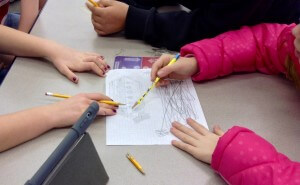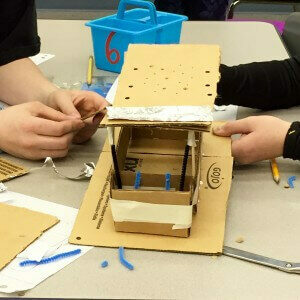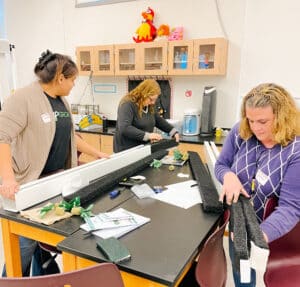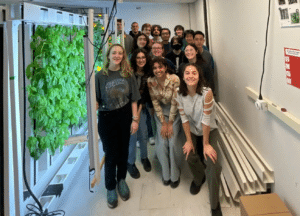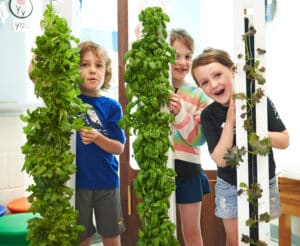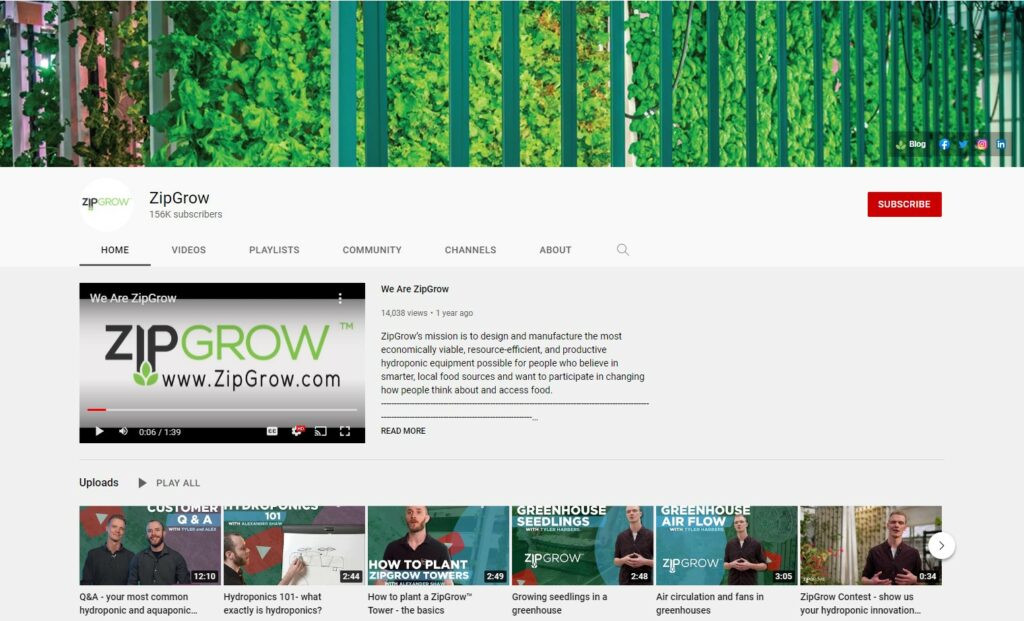Teaching STEM with Hydroponics
STEM is a hot topic in the educational world these days. As we discussed in the last post Why Every Teacher Should Be On Pinterest, it can be difficult to come up with new ways to teach STEM concepts in the classroom. However, hydroponics is one option many educators have discovered in recent years. Today we hear from one educator who in my opinion, can be considered the Queen of STEM.
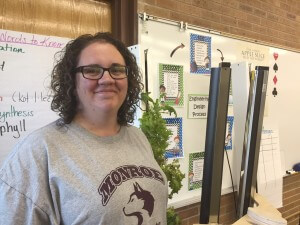
Mrs. Kathy Stanton is a WyTecc Leader of the Year, Making IT Happen Award recipient, and three-time Teacher of the Year nominee who teaches an elementary STEM class at Monroe Intermediate School in Green River, WY. She is “passionate about Project Based Learning, EdTech [and] fostering lifelong learning and inquiry in [her] students.”
When I heard what Kathy was doing with hydroponics and STEM in her school, I just knew it had to be shared. Kathy kindly agreed to write a guest post for us so that the entire educational community would have the opportunity to see first-hand how hydroponics can be used in a STEM classroom. Enjoy! – Halle Brake, Educational Community Manager
When I first came across the Spring System at the Roadmap to STEM Conference hosted by the Wyoming Department of Education and the University of Wyoming, I knew it was something that I had incorporate into my STEM classroom.
I had been teaching 5th grade for the last 14 years and had just made the leap out of my regular classroom (where I taught all subjects, including science) into the newly developed STEM class – the first of its kind at the elementary level in my district.
There was no curriculum, no teachers manual, and no single model for me to follow. I had the freedom to really dig into STEM concepts with all 400 students in my building for 70 minutes once a week, and I knew that the Spring System was something that I could work with.
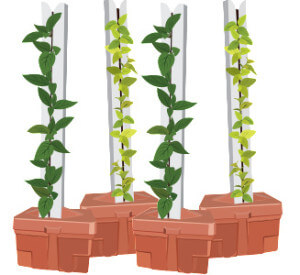 After all, Id been wanting a greenhouse environment at my school for a long time, even though I cant grow plants in my own garden at home to save my life. In the end, I was able to secure 4 Spring Systems total, one through a generous grant from the Wyoming Department of Education and the other three using funds from my districts Wellness Committee.
After all, Id been wanting a greenhouse environment at my school for a long time, even though I cant grow plants in my own garden at home to save my life. In the end, I was able to secure 4 Spring Systems total, one through a generous grant from the Wyoming Department of Education and the other three using funds from my districts Wellness Committee.
Hydroponics and the scientific method
On the outside, it was easy – let’s grow plants and then eat them! But I wanted to go deeper into the idea of hydroponics and why alternative farming methods are important to our future.
So, I started from the beginning: What do plants really need to grow? Student misconceptions were that plants needed sunlight, soil, air and water to grow. So, we tested it out using the scientific method. Students were placed into groups of 4 and as a group were able to choose a variable: soil, air, and light. Then, they planted seeds in two test tubes: a control and a variable. We used paper towels to test for the need for soil, we covered the tubes with plastic wrap to remove air, and we placed the test tube under a box to remove the light variable.
Discovering unexpected results
The controls were all placed under the light set-up that came with our Spring Systems. It was surprising to all of us that our variable plants grew so well – students did not expect that a seed on a moist paper towel would germinate at all. Not only did they germinate, they seemed healthier than our controls in some cases – proving that hydroponics is a viable option for plant growth.
Nor did they expect that when they placed the seeds under a box they would not only germinate, but grow three and four times taller than their control counterpart; though, we observed, not nearly as healthy. They were tall, spindly and yellowish in color – which we attributed to the search for light. The third variable proved to be a little harder to keep true to the experiment – the plastic wrap didnt hold up and failed to keep the test tube sealed.
Next year: rubberbands and sealed containers!
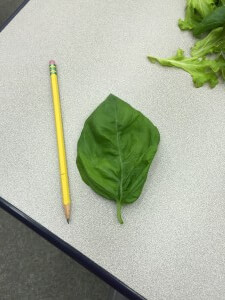
At the same time, students were fascinated by the starter pellets that came with the Classroom Package. They were so impressed that those little pellets could expand to such a large size! We planted our starter plants for the towers and watched them grow, and eventually I was able to demonstrate how the towers worked by planting each classes starter plants.
As our control and variable plants continued to grow, we began researching plants using a webquest. This webquest covered seed and plant parts, reproduction and overall plant needs. As they researched students found that plants could in fact grow in a variety of conditions, many of which they were seeing in the classroom through their own experiment in the test tubes.
Meanwhile, our food was beginning to grow in our towers. We were starting to see lettuce, basil, kale, and sage really start to take off. Students were extremely excited for our first harvest and couldnt wait to tell me how much they enjoyed the variety of greens at lunch and how wonderful the fresh food tasted. Students were surprisingly excited to try kale even though many didnt know what it was.
Real world problem solving
To connect our learning to real world problem solving, I decided to take a different direction with the 5th and 6th graders. This time of year in the 5th grade generally brings a study of space and the planets in our solar system. To incorporate this into hydroponics, students were tasked with extending what they learned about plants to an engineering design challenge: Build a plant growth chamber for space.
After meeting astronaut Barbara Morgan last June at the ExxonMobile Teachers Academy, it was clear how in the future, human space flight and plant growth would be interdependent. She was on the STS-118 mission and researched plant growth in space and the effects of space flight on seed growth. They were able to take millions of seeds into space and then ship them to students all over the country for study. For us to travel within our solar system, we need to be self-sustaining and in order to do that, alternative methods of farming will be key.
STEM Challenge #1: Growth Chambers for Space
For this challenge, I needed students to have more background knowledge on topics not directly related to plants, but equally important for plant survival. I utilized some NEED Project energy stations to explore alternative energy sources that could possibly used on a long term mission to Mars including wind, solar, radiant and electromagnetic energy. With the help of NASAs design challenge and a few online NASA videos (to explore zero gravity), students used materials that were already in my classroom: straws, toothpicks, small washers, plastic spoons, small plastic recyclable trays, foil, blank CDs, pipe cleaners and popsicle sticks.
Students were asked to work with certain material constraints; they could only have two trays and two CDs, but they could use a reasonable amount of straws and toothpicks, for example. I wanted to give them enough material to be able to build a structure no bigger than a shoebox, but to also work within reason and not waste material. Students were also asked to include their power source in their chamber design.
The results were some really interesting structures. Students struggled with the design process where materials and time were limited. They struggled to take into account power supply and zero gravity. Through the process, they worked on math skills, collaboration skills, asked scientific questions and persevered.
STEM Challenge #2: Designing a sustainable system for the community
Rather than studying plant growth in space, 6th graders looked at world population increases and investigated how our farmland is decreasing. In some ways, their challenge was easier: Design a sustainable system to grow food for our school community.
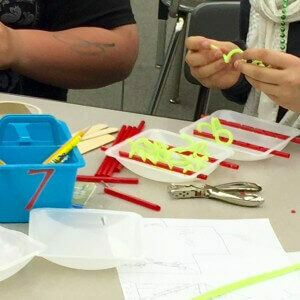 A variety of supplies were used to build these clever growth chambers.
A variety of supplies were used to build these clever growth chambers.Students were asked to consider how a sustainable food supply at our school would actually be beneficial to our school community. They responded with things like, We need healthier food at school and It will save us money in shipping and purchasing costs.
Students had to take into consideration available space, the size of their system, number of students and how sustainable their system would be in the real world. Like the 5th graders, 6th graders struggled with math concepts, limited materials and supplies, collaboration skills and teamwork.
Looking back and thinking forward
As I reflect on these lessons and design challenges, I know there are definitely things that I will do differently next year. Ultimately, I would like both 5th and 6th grade to try to grow their plants in their structures – challenging in itself due to the material constraints. I will definitely be focusing more on student led research, rather than teacher directed. Because this is my first year with the program, Im still working on the best way to focus the efforts of ten- and eleven-year-olds on quality internet research, though my website is quickly filling with links.
Because the technology and research on the ISS has progressed to more efficiently and effectively growing plants, 6th graders next year will also be studying the effects of light on plant growth. I would also like students to do some of the experiments we watched in videos such as extracting chlorophyll and troubleshooting plant health issues. Additionally, Id like to explore with students the use of worms in the Spring System. We really haven’t had a full year of growth yet in our towers, and the use of decomposers will be an another tie-in to classroom science curriculum (biomes, habitats, adaptations, etc).
I have had an amazing year in my STEM classroom watching students work through real world problems. Being able to really dig into a topic has been a huge learning experience for students. When we started studying plants, none of them thought wed also be studying space flight or energy sources. What’s more, I was able to connect yet another design challenge: build a parachute to land safely on Mars. Our cargo was imagined to be our plant chambers – after all, if were going to spend all that time building them, why not try to build a model to land them!
The right time to think outside the box
After teaching in the regular ed classroom for 14 years, I know it’s hard to find any time at all to dig deep into concepts or to integrate subjects. We have so many other things pulling us from our curriculum that our time is limited. But when we think outside the box and find natural connections to subject areas during the work, not necessarily before the work happens, students have a more authentic learning experience and take necessary academic and life skills with them when they leave. We can no longer afford to be hesitant in allowing student inquiry to lead our instruction. By allowing curiosity to direct learning, our classrooms become more exciting and engaging spaces in which learning extends far beyond the walls of the classroom.
For more information on STEM and hydroponics, follow Kathy on Twitter.


